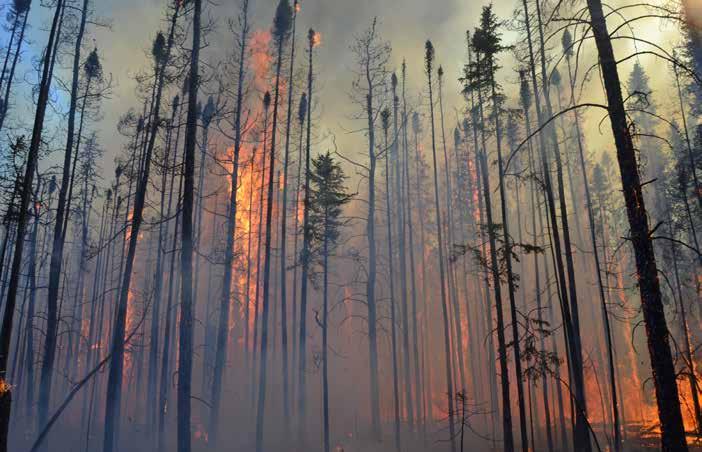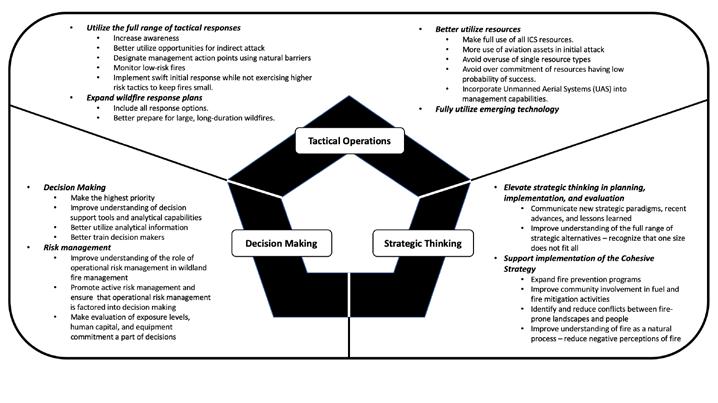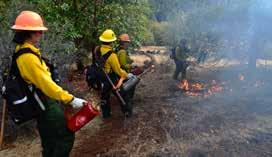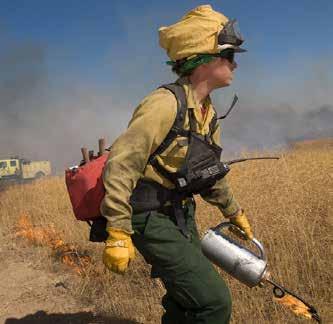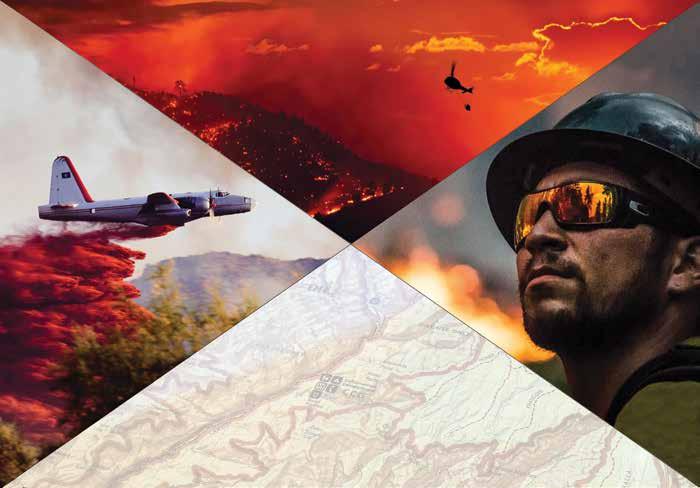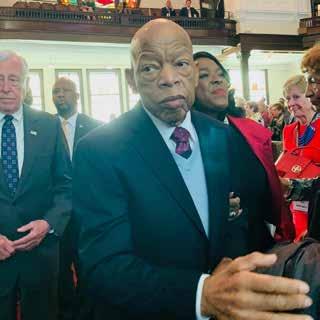SSYS CIEN TEMS: CE UPDATE MODE RSN IZ IN G expenditures have not been shown to increase suppression effectiveness (Calkin et al., 2014). Changing conditions do not alter the direction for safely and effectively extinguishing fire when needed; using fires where allowable; and managing our natural resources by making use of all available options. It is clear that within these three driving factors, there are a number of opportunities for modernization efforts. Many, but likely not all, are shown in Figure 2.
4. Today’s realities, tomorrow’s impacts lead toward modernizing the Wildland Fire Management System Changing conditions and emerging situations are challenging conventional thinking and standard practices. This is not unique to the United States, but one that is pervasive to all fire organizations around the world. The magnitude of change that is taking place has brought us to a point in time warranting a hard and in-depth look at whether forward program movement is commensurate with changing complexity or if operation under an old model continues. There are a number of reports that contend that changes are not being responded to purposefully and quickly enough (Thornton 2020; Kolden 2019; Raines and Harbour 2018; Thompson et al., 2018; Calkin et al., 2015). The most recent fire season in Australia in 2019-2020, one that exceeded all others, has already and continues to generate considerable introspective analysis of the overall fire situation and response capability. Thornton (2020) offers a commentary on this fire season and believes that what is needed is a quantum shift in thinking. He emphatically submits that to pursue the same path under the current system is merely a simple solution to a complex problem, and wrong! Raines and Harbour (2018) state that current and past practices in wildland fire have contributed to an untenable and unstable situation that without important changes will not remain static but will worsen. They submit that change is coming, either through natural on-the-ground events or through organization shifts; the status quo will not continue. Other authors have stated that without significant social and managerial changes, the future of wildland fire management in the western United States will perpetuate “business as usual” (Calkin et al. 2015; Ingalsbee 2017), and likely result in continued increases in costs, damages, and serious injuries (Thompson et al. 2016). Such outcomes only stifle opportunities for meaningful change and represent the rationale for rethinking the wildland fire management system (Thompson et al. 2018). In addition, continuing with the current system as is will not support heightened integration of risk assessment and management but lead to prioritization of management for short-term risks during wildland fire events (Schultz et al., 2019). 20
wildfire
|
J U LY- S E P T E M B E R 2 0 2 0
To most efficiently bolster the wildland fire management system, attention must be focused on those areas having the strongest influences on the system. Looking at factors that limit the ability of strategic thinking, decision making, and tactical operations to function at high levels, it is readily apparent that management realities, social and political realities, and ecological realities surface as the prime foci that can quickly limit or block efficient operations.
Management Realities. Management realities consist of factors having strong influence on management activities and arise from management structure and function. There are four main areas of management realities that we would like to touch on which include: research, science, technology, and information systems; training and education; culture and learning, and preparedness for future scenarios. Research, science, and technology, and information systems: Throughout the history of fire management, research, through systematic investigation, information collection, and analysis, has communicated enormous quantities of new science and technology, positively informed action, validated policy development, supported management programs, and shaped the understanding of wildland fire. Notwithstanding these gains, current and future challenges dictate that knowledge of wildland fire and its interrelationships with the environment and society; its foundational inclusion of risk management, its support to strategic direction, and its influence on overall management capability must be increased (Hall et al., 2018). This is a time where decreased attention and commitment to research is untenable. Making science, technology, and information management significant leverage points in support of program implementation must be a priority goal (Thornton 2020; Cissel and Zimmerman 2018). Accelerated and well-conducted research programs are more vital to the success of wildland fire management endeavors than ever before. Science, especially research conducted in a cooperative manner, will assist in strengthening fire and land management (Hall et al., 2018).
What can be done?
• Present a strong and definitive leaders’ intent to make continuing and accelerating research a greater priority so wildland fire science can move forward as an organized body of knowledge and improve the application of science information for practical purposes. • Increase research program budgets to support continued and accelerated work. • Increase science delivery and translation across agency programs and make outcomes more accessible, useful, and actionable. • Update data sets, advance technology, and expand audiences so that wildland fire science can more readily support and improve planning, implementation, and decision-making processes.

